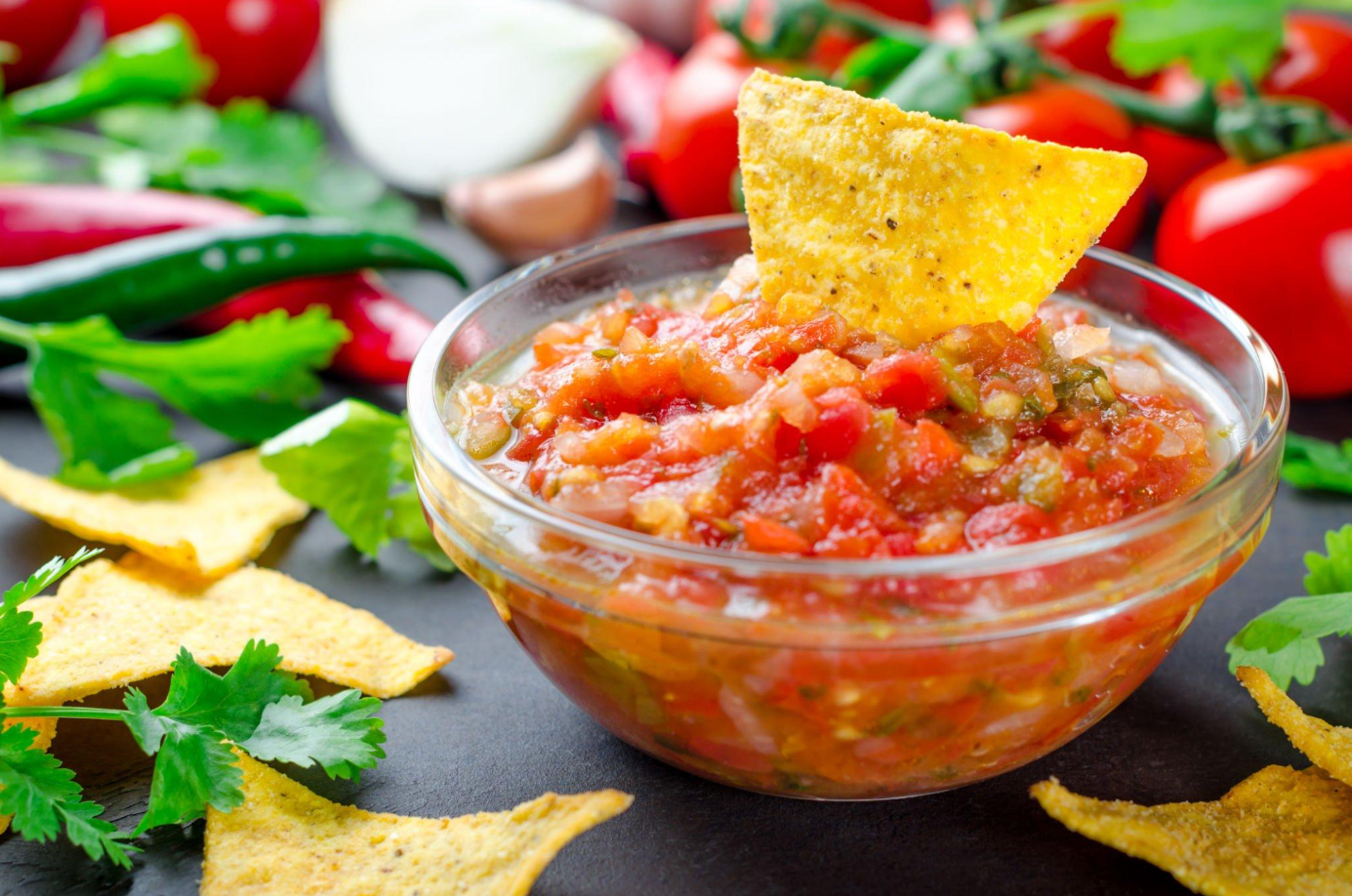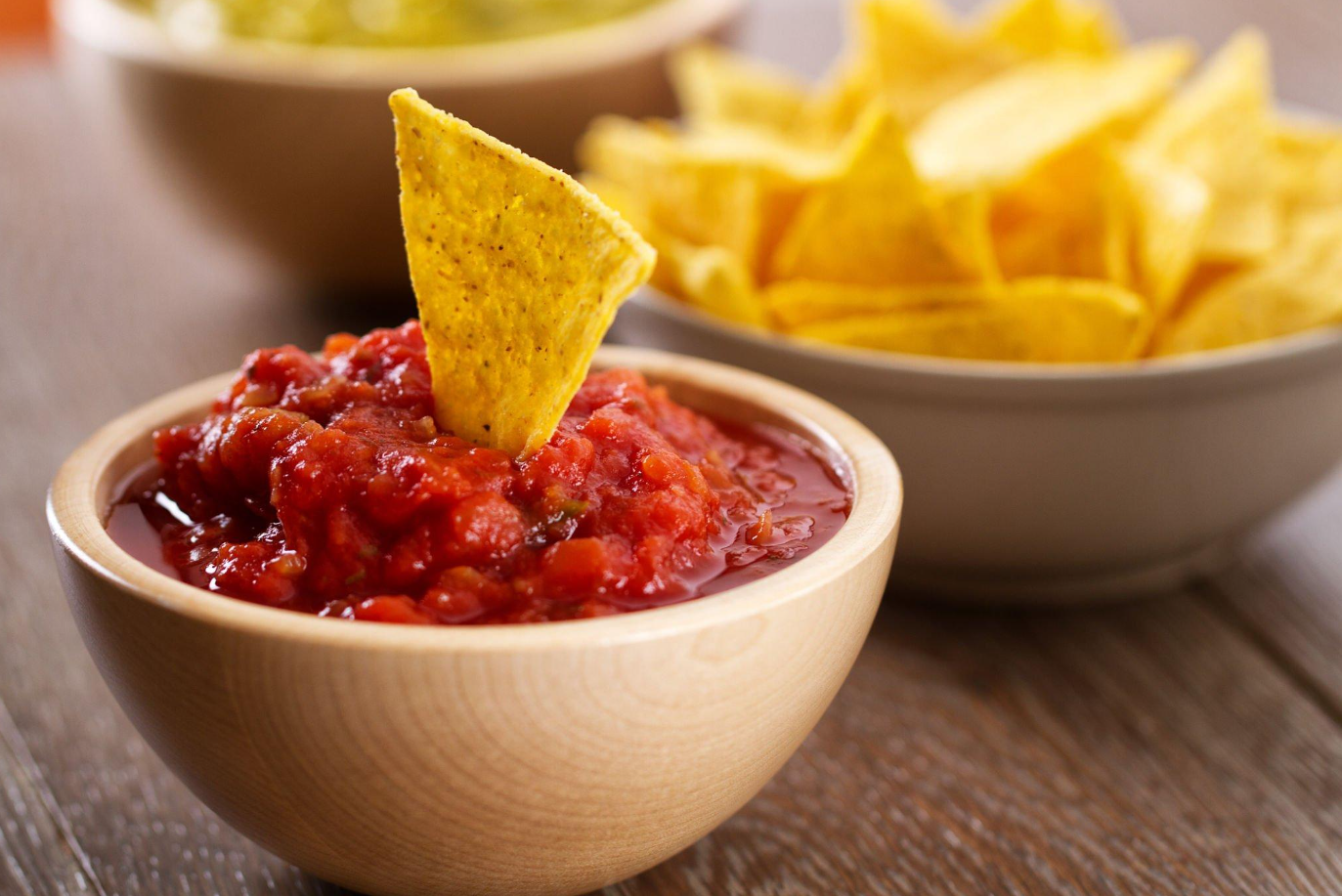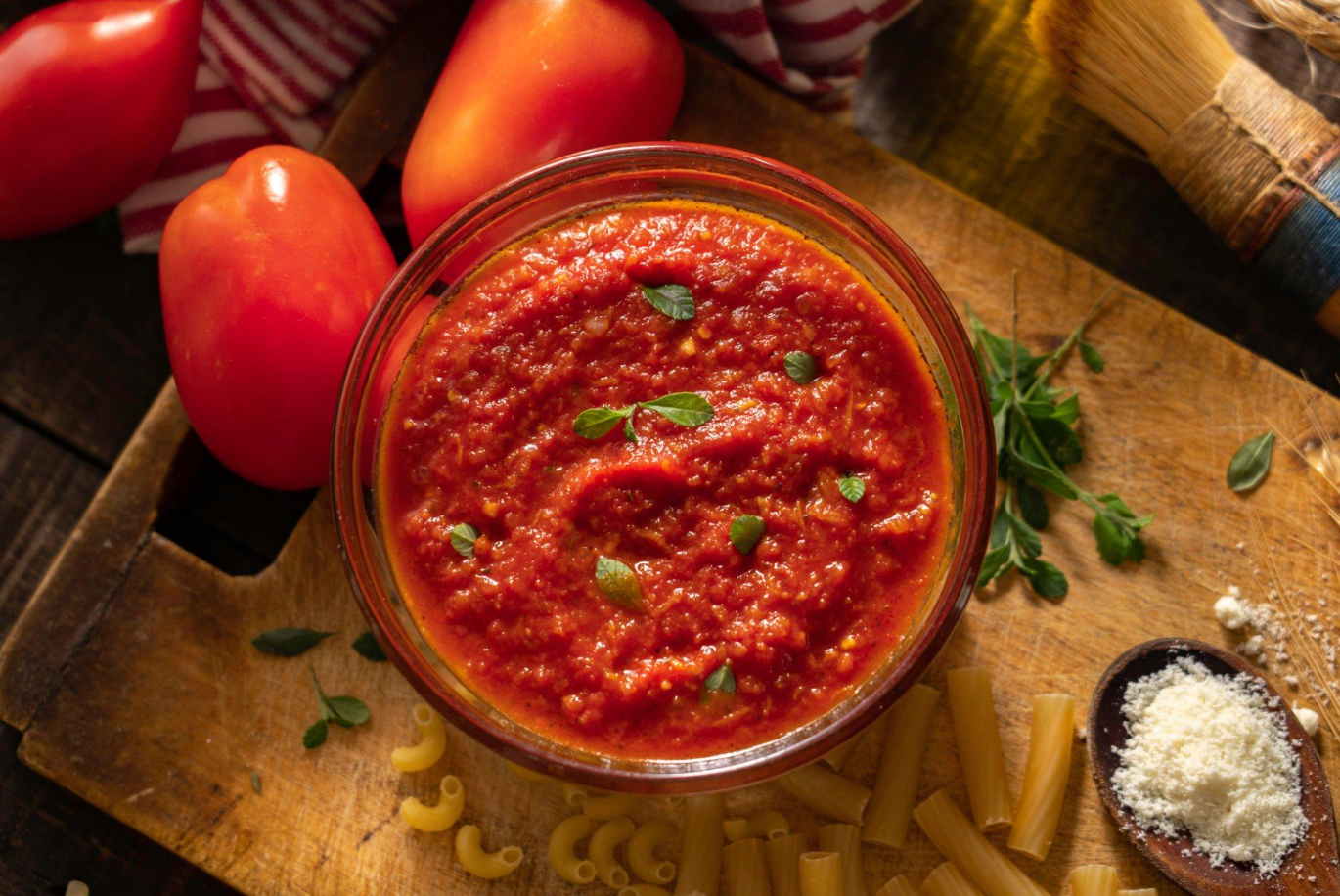
Introduction to Salsa
Salsa, a vibrant and flavorful condiment, has become a staple in many kitchens worldwide. Its versatility and range of flavors make it a favorite for enhancing various dishes. In this article, we delve into the intricacies of salsa’s shelf life, exploring both homemade and store-bought varieties.
Global Popularity and Varieties
Salsa, traditionally a Mexican sauce, has transcended cultural boundaries to become a global phenomenon. Its primary ingredients, such as tomatoes, onions, and peppers, contribute to its fresh and tangy flavor profile. The popularity of salsa can be attributed to its adaptability; it can be spicy or mild, chunky or smooth, catering to a wide array of taste preferences.
Homemade vs. Store-Bought
The distinction between homemade and store-bought salsa is crucial in understanding their respective shelf lives. Homemade salsa, often made with fresh ingredients and without preservatives, typically has a shorter shelf life. In contrast, store-bought salsa, which often contains preservatives, can last longer. However, the absence of artificial preservatives in homemade salsa is a quality that many health-conscious consumers appreciate.
Importance of Shelf Life
Understanding the shelf life of salsa is not just about preventing waste; it’s also a matter of food safety. Consuming salsa past its prime can lead to foodborne illnesses, making it essential to know how long your salsa can be safely enjoyed.
In the following sections, we will explore the various factors that influence the shelf life of salsa, signs of spoilage, and tips for maximizing its longevity. Whether you’re a fan of the fiery kick of a hot salsa or the mild taste of a salsa verde, this guide will provide valuable insights into keeping your salsa fresh and safe to consume.
Explore Homemade Salsa Recipes for inspiration on creating your own delicious versions of this versatile condiment. Additionally, understanding the Basics of Food Preservation can further enhance your knowledge in maintaining the freshness and safety of your homemade salsa.
Shelf Life of Salsa
Unopened Salsa: Pantry vs. Fridge
Understanding the shelf life of unopened salsa is crucial for both safety and quality. Store-bought salsa, when unopened, can last significantly longer due to the preservatives used in its production. Typically, it can stay fresh for 12-18 months in a cool, dark pantry. On the other hand, homemade salsa, lacking these preservatives, should be refrigerated immediately and consumed within a few days.
- Store-Bought Salsa in the Pantry: Lasts 12-18 months.
- Homemade Salsa in the Fridge: Lasts 1-3 days.
Opened Salsa: Refrigeration is Key
Once you open a jar of salsa, its shelf life reduces considerably. Store-bought salsa, when refrigerated, can last about 2-4 weeks. However, always check for signs of spoilage before consumption. Homemade salsa, being more perishable, should be consumed within a shorter timeframe.
- Store-Bought Salsa in the Fridge: Lasts 2-4 weeks.
- Homemade Salsa: Consume within 1-3 days of opening.
Freezing for Extended Shelf Life
Freezing is an excellent way to extend the shelf life of salsa, especially if you have a large batch or can’t consume it quickly. Store the salsa in airtight containers or freezer bags, clearly labeled with the date. This method can preserve salsa for several months, though it may alter the texture slightly upon thawing.
Factors Affecting Shelf Life
Several factors influence the shelf life of salsa, including:
- Ingredients: Fresh ingredients in homemade salsa shorten its shelf life.
- Preservatives: These extend the shelf life of store-bought salsa.
- Storage Conditions: Cool, dark environments are ideal for unopened salsa.
Understanding these factors helps in making informed decisions about storing and consuming salsa, ensuring both safety and taste.
Preserving Agents in Store-Bought Salsa
Store-bought salsa often contains preservatives that extend its shelf life. These agents prevent bacterial growth and maintain the salsa’s quality over time. However, once opened, the effectiveness of these preservatives diminishes, hence the need for refrigeration.
For more insights into the role of preservatives in food products, consider reading about Food Preservation techniques. Additionally, for those interested in making their own salsa, Pinterest: Salsa Recipes offers a variety of creative and delicious options.
Signs of Spoilage
Visual Indicators: Color and Mold
One of the first signs that your salsa has gone bad is a noticeable change in color. Fresh salsa should have a vibrant red or green hue, depending on the ingredients. Any dullness or discoloration can indicate spoilage. Additionally, the presence of mold or any fuzzy growths is a clear sign that the salsa is no longer safe to consume.
- Color Change: Look for any loss of vibrancy or unusual colors.
- Mold Growth: Any visible mold or fuzz means the salsa should be discarded.
Olfactory Signs: Unusual Odors
A strong, unpleasant odor is a telltale sign of spoiled salsa. Fresh salsa should have a pleasant, tangy aroma. If it smells sour, musty, or just “off,” it’s best to err on the side of caution and throw it away.
Texture Changes: Separation of Ingredients
Another sign of spoilage is a noticeable separation of ingredients. While some separation can occur naturally, excessive separation, especially accompanied by a watery layer, can indicate that the salsa has gone bad.
Taste Test: When to Avoid
If the salsa passes the visual and smell tests, a small taste test can be the final check. However, if you have any doubts based on the appearance or smell, it’s safer not to taste it at all.
When To Throw Out a Jar of Salsa
It’s important to discard any salsa that shows signs of spoilage. Consuming spoiled salsa can lead to foodborne illnesses. The key indicators to watch for include:
- Change in Color
- Signs of Mold
- Unpleasant Odor
- Texture Changes
Understanding Spoilage in Salsa
Spoilage in salsa can occur due to various factors, including improper storage, contamination, or simply exceeding its shelf life. It’s crucial to understand these factors to prevent the risk of consuming spoiled salsa.
- Improper Storage: Storing salsa in fluctuating temperatures or in unsealed containers can accelerate spoilage.
- Contamination: Using contaminated utensils or dipping directly into the salsa jar can introduce bacteria.
- Exceeding Shelf Life: Even with proper storage, salsa cannot last indefinitely. Always adhere to the recommended shelf life.
Preventive Measures
To minimize the risk of spoilage, always store salsa in airtight containers and refrigerate promptly. Avoid cross-contamination by using clean utensils and avoid eating directly from the jar.
For further information on food safety and spoilage signs, Wikipedia: Food Preservation offers valuable insights. Additionally, understanding the Basics of Refrigerator storage can aid in keeping your salsa fresh for longer.

Safety and Health Considerations
Risks of Consuming Spoiled Salsa
Eating salsa that has gone bad can pose health risks. Spoiled foods, including salsa, can harbor harmful bacteria like Salmonella and E. coli, leading to foodborne illnesses. Symptoms can range from mild gastrointestinal discomfort to more severe health issues, especially in vulnerable populations like the elderly, young children, and those with weakened immune systems.
Food Safety Tips for Handling Salsa
To ensure the safety of salsa, especially homemade varieties, follow these food safety tips:
- Proper Washing: Wash all ingredients thoroughly before making salsa.
- Clean Utensils and Surfaces: Use clean cutting boards, knives, and containers to prevent cross-contamination.
- Prompt Refrigeration: Store salsa in the refrigerator immediately after preparation or opening.
Best Practices for Storing Salsa
Proper storage is key to maintaining the safety and quality of salsa. Here are some best practices:
- Airtight Containers: Store salsa in airtight containers to prevent contamination and preserve freshness.
- Consistent Refrigeration: Keep salsa refrigerated at a consistent temperature.
- Avoid Direct Contact: Use a clean spoon each time you serve salsa to prevent bacterial growth.
Recognizing and Responding to Foodborne Illness
If you suspect that you have consumed spoiled salsa and are experiencing symptoms like nausea, vomiting, or diarrhea, it’s important to stay hydrated and seek medical attention if symptoms persist or worsen.
Educating Yourself on Food Safety
For more comprehensive information on food safety, consider exploring resources like Wikipedia: Food Safety. Additionally, Pinterest: Food Safety Tips provides practical advice and tips for safe food handling and storage.
Maximizing Salsa’s Shelf Life
Proper Storage Techniques
The key to extending the shelf life of salsa, whether homemade or store-bought, lies in proper storage. Here are some effective techniques:
- Refrigeration: Always refrigerate salsa promptly after use. This slows down the growth of bacteria and preserves the freshness of the ingredients.
- Airtight Containers: Transfer salsa to an airtight container if it’s not in one already. This prevents air exposure and contamination.
Tips for Extending Freshness
To keep your salsa tasting fresh for as long as possible, consider these tips:
- Minimal Air Exposure: Reduce the amount of time the salsa is exposed to air. Close the lid tightly after each use.
- Use Clean Utensils: Always use a clean spoon to serve salsa, avoiding contamination from other foods or bacteria.
Freezing and Thawing Methods
Freezing salsa can significantly extend its shelf life, though it may slightly alter the texture. Here’s how to do it properly:
- Freezing: Pour salsa into a freezer-safe bag or container, leaving some space for expansion. Seal tightly and label with the date.
- Thawing: Thaw frozen salsa in the refrigerator overnight. Stir well before serving, as separation may occur.
Regular Checks for Freshness
Regularly check your salsa for signs of spoilage, even if it’s within the expected shelf life. Discard it if you notice any off smells, colors, or textures.
Understanding the Impact of Ingredients
The ingredients in salsa can also affect its shelf life. For instance, fresh cilantro or avocado in homemade salsa may shorten its shelf life due to their quicker spoilage rates.
For more insights into effective food storage, the Basics of Refrigerator use can be a helpful resource. Additionally, for creative ways to use salsa, Pinterest: Salsa Recipes offers a variety of ideas.

FAQs
How long can you keep homemade salsa in the fridge?
- Homemade salsa typically lasts for 1-3 days in the fridge. Ensure it’s stored in an airtight container and check for signs of spoilage before consuming.
Can you freeze salsa to extend its shelf life?
- Yes, you can freeze salsa. Store it in a freezer-safe container or bag, leaving some space for expansion. Frozen salsa can last for several months, though the texture may change slightly upon thawing.
How to tell if salsa has gone bad?
- Signs of bad salsa include:
- Change in color or appearance.
- Unpleasant or sour odor.
- Visible mold or fuzz.
- Off taste or texture.
Is it safe to eat salsa after the expiration date?
- It’s not recommended to eat salsa past its expiration date, especially if it shows signs of spoilage. Store-bought salsa may last a bit longer due to preservatives, but always prioritize safety and check for spoilage.
What are the risks of eating spoiled salsa?
- Consuming spoiled salsa can lead to foodborne illnesses, with symptoms like nausea, vomiting, and diarrhea. It’s important to discard any salsa that appears or smells spoiled.
Can the shelf life of salsa vary based on its ingredients?
- Yes, the shelf life of salsa can vary depending on its ingredients. For example, salsas with fresh herbs or dairy products may spoil faster than those without.
How should you store salsa to maximize its shelf life?
- To maximize the shelf life of salsa:
- Keep it refrigerated in an airtight container.
- Minimize air exposure and use clean utensils for serving.
- Consider freezing if you won’t consume it within a few days.
For more information on food safety and storage, Wikipedia: Food Safety is a valuable resource. Additionally, for creative salsa recipes and storage tips, explore Pinterest: Salsa Recipes.
Conclusion
In conclusion, understanding the shelf life of salsa, whether homemade or store-bought, is essential for both enjoying its flavors to the fullest and ensuring food safety. Remember, the key to preserving salsa lies in proper storage and handling. Always store salsa in the refrigerator in an airtight container and be vigilant for any signs of spoilage, such as changes in color, odor, or texture.
Furthermore, while freezing can extend the shelf life of salsa, it’s important to note that the texture may change slightly upon thawing. Therefore, it’s advisable to use frozen salsa in cooked dishes where the change in texture is less noticeable.
Moreover, for those who love making their own salsa, understanding the impact of different ingredients on its shelf life can help in planning how much to prepare and how quickly to consume it. Additionally, always prioritize food safety by using clean utensils and avoiding cross-contamination.
Finally, for more information on salsa recipes and storage tips, don’t hesitate to explore resources like Pinterest: Salsa Recipes. Also, for a deeper understanding of food preservation and safety, Wikipedia: Food Safety offers comprehensive insights.
By following these guidelines and tips, you can enjoy delicious and safe salsa every time.


